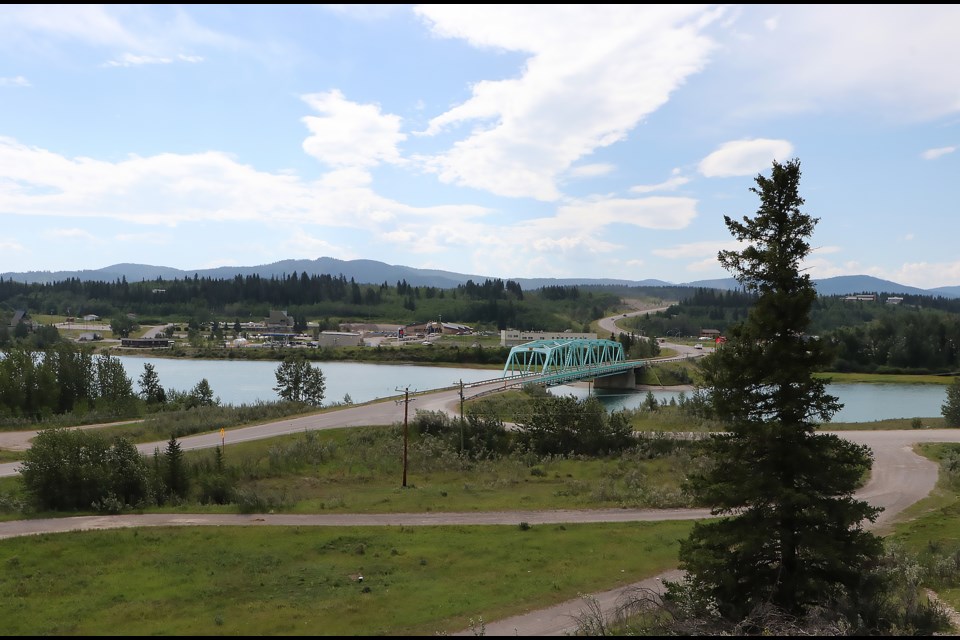ÎYÂRHE NAKODA – Îyârhe Nakoda First Nation members using the Nation’s own telecom service will soon be up-to-speed with internet targets set by the federal government.
Stoney Nakoda Telecom began making Infrastructure upgrades last year, following an announcement of $2.884 million from the Universal Broadband Fund (UBF) to support higher internet speeds in the areas of Mînî Thnî (Morley), Eden Valley, Benchlands and the Ghost Lake reserve lands of Îyârhe Nakoda.
“We’re very close to being complete,” said Blair Birch, director of capital projects and public works with Stoney Tribal Administration. “The project has involved putting up new towers in Morley and Eden Valley in areas that were poorly served before and the installation of repeater stations in a couple different locations.”
The project will improve internet speed to reach federal targets of 50 Megabits per second (Mbps) download and 10 Mbps upload, at no cost to the Nation’s customers, which includes about 80 per cent of the households in Mînî Thnî and Eden Valley.
Prior to the Nation-owned company providing telecommunication services – including phone and television – most homes either did not have access to internet or used dial-up.
While internet access is far and above what the communities had access to before Stoney Telecom launched in 2014, those speeds are considered a minimum for what rural communities should have access to today by Canadian Radio-television and Telecommunications Commission (CRTC) standards.
As recently as five years ago, the CRTC and governments across Canada were targeting universal broadband coverage at download speeds of five Mbps and upload speeds of one Mbps.
Overwhelmingly, rural and remote communities have identified challenges accessing affordable, high-speed internet as the number one issue impeding their economic growth, according to a federal plan which aims to connect all Canadians to universal broadband.
The plan, High Speed Access for All: Canada’s Connectivity Strategy, states most households now have access to at least those speeds, but they’re much too slow to support cloud-based software applications, online learning resources and telehealth services.
“To take full advantage of the opportunities offered by the modern internet, 50/10 speeds are necessary,” states the plan. “At these speeds, there is a clear divide between rural and urban Canada.
“In 2017, only 37 per cent of rural households had access to 50/10 Mbps, compared with 97 per cent of urban homes. Only about 24 per cent of households in Indigenous communities have access to 50/10 Mbps.”
According to the province, about 80 per cent of Indigenous communities and 67 per cent of rural and remote communities do not have access to reliable, high-speed internet, and none of the eight Métis Settlements in Alberta can access federal target speeds.
In October 2022, the governments of Alberta and Canada announced another allocation of $70.6 million from the UBF to support internet upgrades for 50 communities across the province, including Big Horn, a remote Îyârhe Nakoda community located 24 kilometres southwest of Nordegg.
Roughly 10,400 households, including more than 2,700 Indigenous households, are expected to benefit from the joint government investment. Of those, about 44 are in Big Horn, according to 2016 census data. There are about 237 people living there.
That project will connect the remote community to Nordegg’s fibre-optic network, providing improved internet and cell coverage, explained Birch.
“Overall, this has been a great initiative from the government and we are very fortunate to be able to build from it,” he said. “Everyone should have access to affordable, reliable internet to stay connected in the modern world.”
The federal government is investing $1.7 billion in new funding for broadband infrastructure, including through the UBF, to support broadband projects across the country.
Other funding covers a top-up to the Connect to Innovate program, support for low-Earth orbit satellite capacity, and two new Statistics Canada surveys to measure broadband usage.
The Local Journalism Initiative is funded by the Government of Canada. The position covers Îyârhe (Stoney) Nakoda First Nation and Kananaskis Country.



